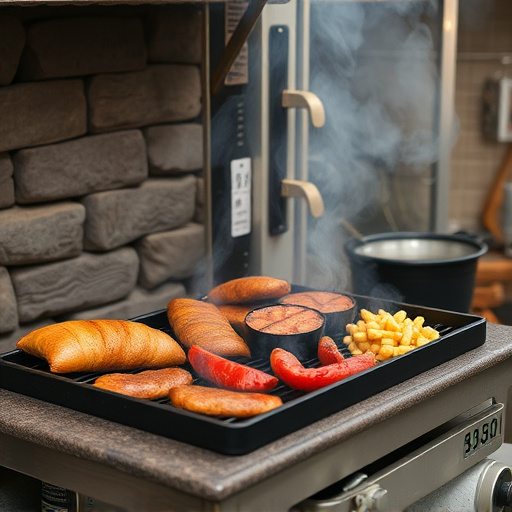To achieve perfect oven-baked BBQ ribs, choose meaty full ribs (at least 1/2 inch thick) with visible marbling for tenderness. Preheat your oven to 350°F (175°C), use a rack for even cooking, and consider marinades or dry rubs for flavor. A multi-layered approach involving marination, dry rub, basting, and saucing ensures tender, flavorful ribs. Alternatively, a quicker method at 375°F (190°C) bakes ribs for 2 hours, flips, sauces, then returns them for another hour. Rest ribs for 10-15 minutes post-cooking to redistribute juices and enhance flavor. Pair with sides for an unforgettable BBQ rib experience.
Looking to perfect your BBQ rib recipe using an oven? This comprehensive guide reveals the secrets to achieving tender, flavorful ribs without the traditional slow cooking. Learn the art of choosing the right ribs, preheating your oven for optimal results, and deciding between a marinade or dry rub. We’ll walk you through packing in layers of taste and our proven quick oven technique, ensuring your BBQ rib dinner is jaw-droppingly delicious.
- Choosing the Right Ribs for Your BBQ Rib Recipe Oven Method
- Preheating Your Oven: A Key Step for Tender Results
- Marinade or Dry Rub: Which One to Use and How to Apply It
- Packing in the Flavor: Techniques for a Multi-Layered Taste Experience
- The Quick Oven Technique: A Step-by-Step Guide to Perfection
- Resting and Serving: Ensuring Your BBQ Ribs Are Jaw-Droppingly Delicious
- Tips and Tricks for Mastering Your BBQ Rib Recipe Oven Method
Choosing the Right Ribs for Your BBQ Rib Recipe Oven Method
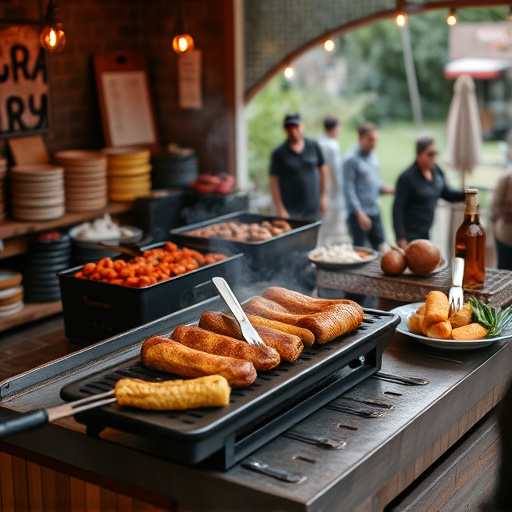
When it comes to choosing the right ribs for your BBQ rib recipe using an oven method, there are a few key factors to consider. Look for meaty, full ribs with visible marbling; this ensures the meat remains tender and juicy during the cooking process. Opt for ribs that are at least 1/2 inch thick, as these will hold their shape better and produce a more even cook. The cut of the ribs also matters; baby back ribs are a popular choice due to their smaller size and less tough, thicker end pieces.
Additionally, ensure your ribs are well-chilled before cooking. This helps in achieving that desired smoky flavor and tender texture. In terms of BBQ rib recipe oven methods, slow and low is the way to go. This allows the meat to break down and become incredibly soft while locking in all those delicious flavors.
Preheating Your Oven: A Key Step for Tender Results
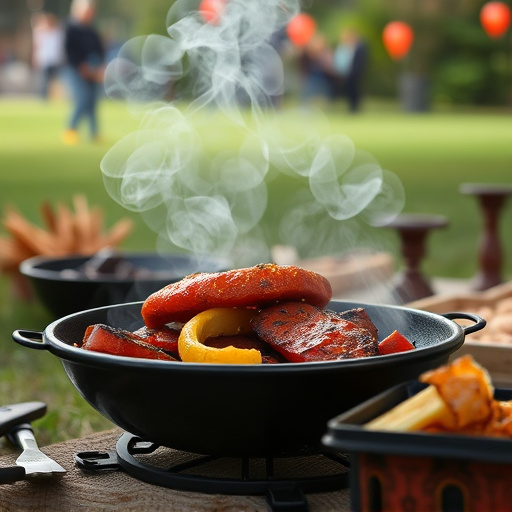
Preheating your oven is a crucial step in achieving tender, mouthwatering BBQ ribs using this quick method. While it may seem like an extra step, it’s essential for ensuring even cooking and maximizing flavor. When preheating, aim for a temperature of 350°F (175°C). This temperature range allows the oven to gently but effectively cook the ribs, breaking down tough connective tissues and collagen to create tender meat.
During preheating, understand that your oven needs time to reach this stable temperature. Allow it to heat up fully before placing your rib rack inside. This process is key in the success of your BBQ rib recipe oven method, so don’t rush it. With proper preheating, you’ll be on your way to enjoying a delicious, slow-cooked BBQ rib meal in no time.
Marinade or Dry Rub: Which One to Use and How to Apply It

When it comes to achieving tender, mouthwatering BBQ ribs in an oven, the choice between a marinade or dry rub is pivotal. Both methods have their advantages and can significantly impact the final flavor profile. Marinades are liquid-based, typically consisting of various spices, sauces, and oils. They penetrate the meat, enhancing its tenderness and adding deep, moist flavors. This method is ideal for those who prefer a more delicate, sauce-rich rib experience. Simply brush the marinade over the ribs before baking, ensuring even coverage for optimal results.
Dry rubs, on the other hand, are a blend of spices only, offering a coarser yet flavorful alternative. They create a crispy, caramelized exterior while locking in moisture within the meat. Dry rubs are perfect for rib enthusiasts who desire a robust, savory taste without excessive sauce. Rub the spice mixture generously onto the ribs before cooking, allowing the flavors to meld and intensify during the oven’s heat treatment. This quick application technique ensures your BBQ rib recipe oven-roasted perfection every time.
Packing in the Flavor: Techniques for a Multi-Layered Taste Experience
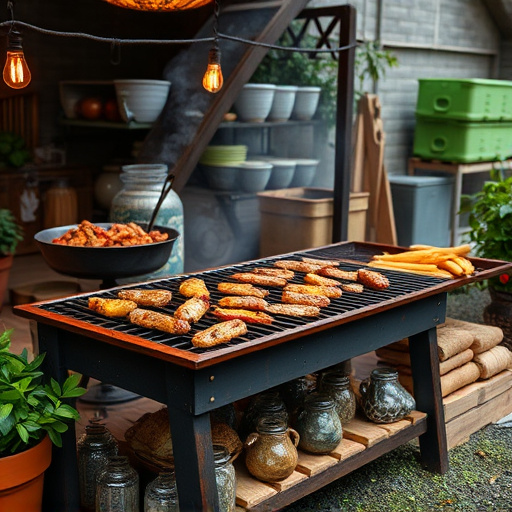
When it comes to achieving mouthwatering, fall-off-the-bone BBQ ribs in an oven, the key lies in packing in layers of flavor that transcend simple rub and sauce. Start by marinating your ribs overnight in a mixture of your favorite BBQ sauce, garlic, and herbs for a deep, savory base. This step infuses moisture and amplifies natural meat flavors.
Next, layer on dry rubs generously before baking. A good rub combination includes brown sugar, paprika, peppercorns, and salt, which contribute a complex sweetness and heat. During the cooking process, these spices slowly release their aromas, creating an immersive sensory experience. Remember to baste your ribs halfway through with more BBQ sauce for an extra glistening finish that seals in tenderness and adds another dimension of flavor.
The Quick Oven Technique: A Step-by-Step Guide to Perfection
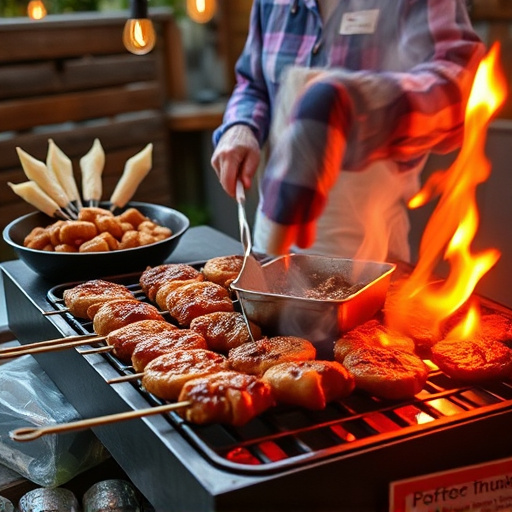
The quick oven method for tender BBQ ribs is a game-changer for those seeking a delicious, time-efficient meal. This technique involves cooking ribs in an oven at high temperature for a shorter duration compared to traditional methods. By understanding the science behind this process and following a structured guide, anyone can achieve perfectly cooked, falling-off-the-bone ribs without spending hours over the grill.
Here’s a step-by-step breakdown: first, prepare your BBQ rib recipe by seasoning the ribs generously with your favorite rub. Next, preheat your oven to 375°F (190°C). Place the ribs on a wire rack set inside a roasting pan, ensuring they aren’t touching. Bake for 2 hours, then flip them over and brush with BBQ sauce. Return to the oven for another hour, or until the meat is tender and easily peels from the bone. This method consistently delivers mouthwatering results, making it an ideal choice for weeknight dinners or any occasion when you desire juicy, delicious BBQ ribs without the long wait.
Resting and Serving: Ensuring Your BBQ Ribs Are Jaw-Droppingly Delicious
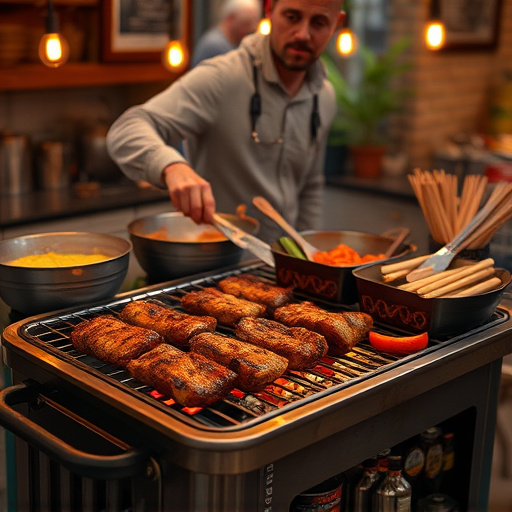
After cooking your ribs to perfection in the oven, it’s crucial to let them rest before serving. This resting period allows the juices to redistribute throughout the meat, ensuring each bite is incredibly tender and juicy. During this time, the internal temperature of the ribs will continue to rise slightly, securing that mouthwatering, caramelized glaze. Aim for a 10-15 minute rest before slicing and serving.
When the ribs are ready, they should be easily pulled apart with a fork. Serve them up with your favorite BBQ sauce on the side for guests to customize their plates. Pair your delicious, freshly cooked BBQ ribs with sides like coleslaw, baked beans, or cornbread for an unforgettable meal.
Tips and Tricks for Mastering Your BBQ Rib Recipe Oven Method
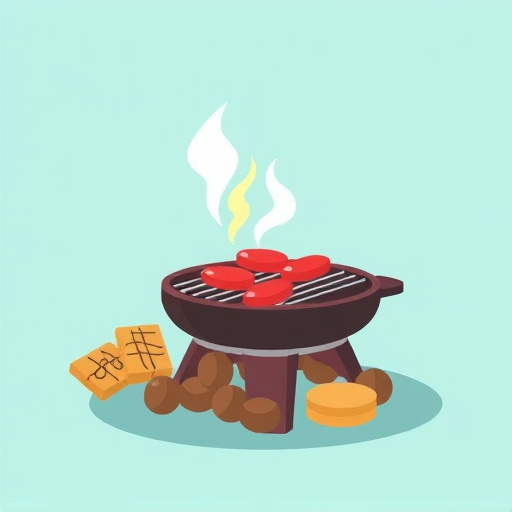
Mastering your BBQ rib recipe using an oven method takes a bit of practice, but with some tips and tricks, you can achieve perfectly tender ribs every time. One crucial tip is to ensure your oven is preheated to the right temperature; 300°F (149°C) is ideal for slow cooking ribs to keep them moist. Use a rack to place your ribs on, allowing heat to circulate evenly around them. A simple dry rub of salt, pepper, paprika, and garlic powder before cooking will add flavor, but for extra juiciness, inject some BBQ sauce or a marinade several hours ahead.
During the cooking process, avoid opening the oven door frequently as this can disrupt the temperature and slow down the cooking time. Use a meat thermometer to check the internal temperature; ribs are done when they reach 195°F (90.5°C). For an extra crispy finish, broil your ribs for a few minutes under a preheated grill or broiler towards the end of cooking. Experiment with different rubs and sauces to find your perfect BBQ rib recipe oven method that will impress your family and friends.
